El Banco de Tabasco
The concession for a bank in Tabasco was granted to G. Benito y Compañía, Búlnes y Compañía and Policarpo Valenzuela on 29 August 1900. The Banco de Tabasco was founded on 29 September in the city of San Juan Bautista (Villahermosa) with a capital of $1,000,000 and began operations on 1 January 1901. At the turn of the century the population of the entire state was only about 150,000 and the chief economic activities were ranching, logging and dye manufacture: the currency requirement of such an area were not large but this bank profited from the fact that the federal government granted generous concessions to the first bank of issue to be founded in each state.
The shareholdings were as follows:
| No. of shares | Value | |
| M. Ripoll y Compañía | 3,020 | $ 302,000 |
| Búlnes y Compañía | 2,400 | 240,000 |
| Policarpo Valenzuela | 1,440 | 144,000 |
| G. Benito y Compañía Sucesores | 1,100 | 110,000 |
| José García Trueba | 550 | 55,000 |
| Manuel Suárez González | 400 | 40,000 |
| José González Lamadrid | 300 | 30,000 |
| Nicolás Valenzuela | 300 | 30,000 |
| Manuel Romano | 200 | 20,000 |
| M. Berreteaga y Compañía | 200 | 20,000 |
| Pánfilo Maldonado | 50 | 5,000 |
| Enrique L. Desmarets | 20 | 2,000 |
| Pellecier, Sastré y Compañía Sucesores | 10 | 1,000 |
| Tiroso Inurreta | 10 | 1,000 |
| 10,000 | $1,000,000 |
The bank sought permission to open a branch in Pichucalco, in the neighbouring state of Chiapas, on the grounds that that area had closer ties to Tabasco than to Tuxtla Gutiérrez and the rest of the state. The branch finally opened on 23 August 1904Memorias de las Instituciones de Crédito correspondientes á los años de 1904-1906, tomo III.
American Bank Note Company print runs
The American Bank Note Company produced the following notes.
It engraved special vignettes of the coat of arms of Tabasco (C 764), a portrait of Doña MarinaDoña Marina, more commonly known as La Malinche or Malintzin was a Nahua woman who played a key role in the Spanish conquest of the Aztec Empire, acting as an interpreter, advisor and intermediary for the Spanish conquistador, Hernán Cortés. She was one of 20 women slaves given to the Spaniards by the natives of Tabasco in 1519. Later, she gave birth to Cortés's first son, Martín, who is considered one of the first mestizos (people of mixed European and indigenous American ancestry). (C 763) for the $5 note, a view of the Government Palace (C 767) for the $10 note, and a view of the waterfront of San Juan Bautista (Villahermosa) (C 678) for all the backs.
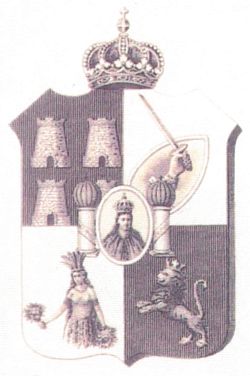
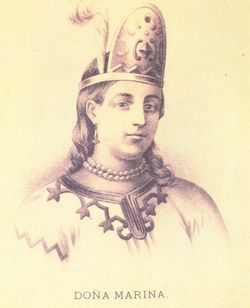
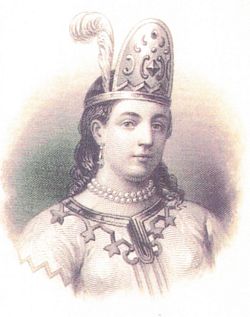
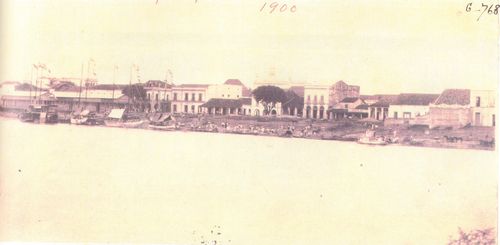
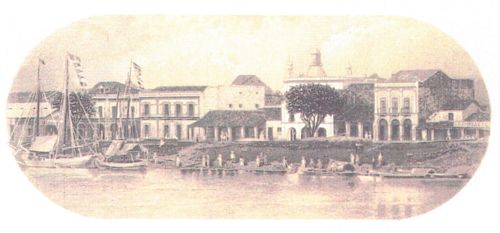
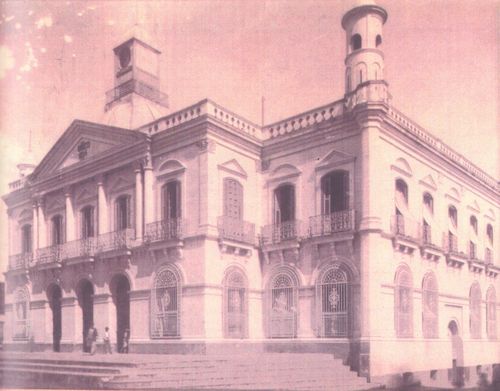
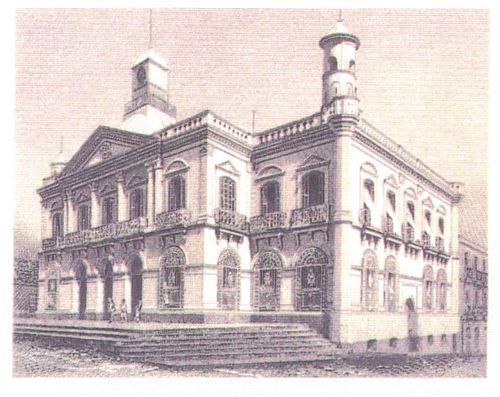
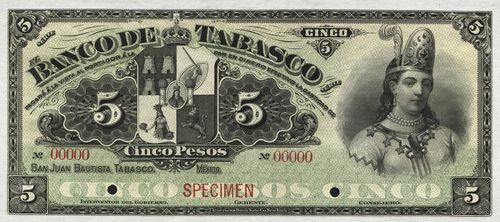
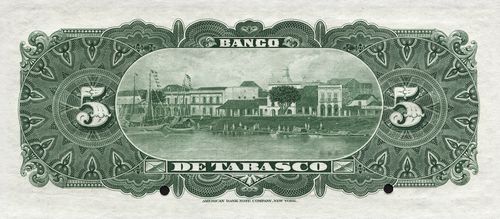
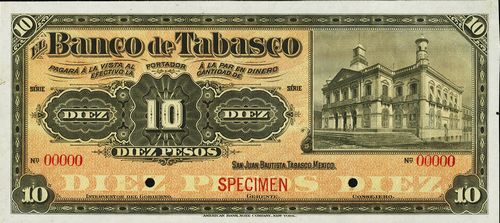
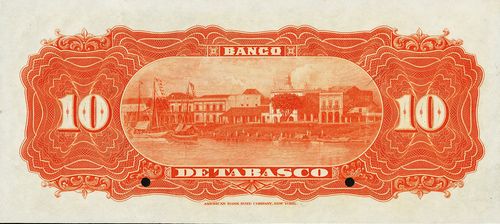
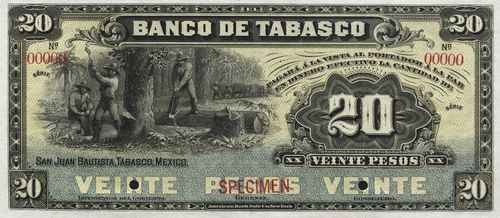
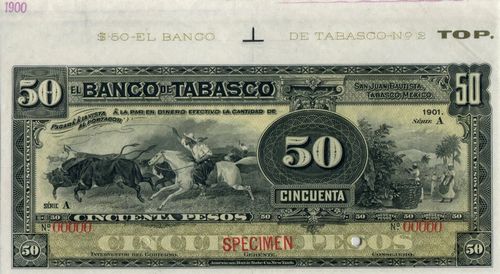
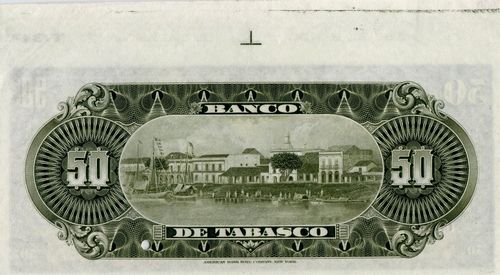
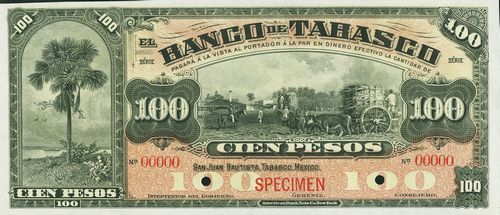
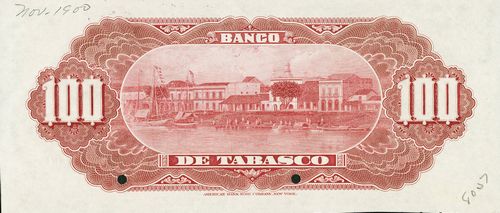
| Date | Value | Number | Series | from | to |
| September 1900 | $5 | 10,000 | A | 1 | 10000 |
| $10 | 10,000 | A | 1 | 10000 | |
| $20 | 5,000 | A | 1 | 5000 | |
| $50 | 5,000 | A | 1 | 5000 | |
| $100 | 5,000 | A | 1 | 5000 |
| Date | Value | Number | Series | from | to |
| May 1901 | $5 | 20,000 | A | 10001 | 30000 |
| $10 | 5,000 | A | 10001 | 15000 |
| Date | Value | Number | Series | from | to |
| June 1903 | $5 | 30,000 | 30001 | 60000 | |
| $10 | 15,000 | 15001 | 30000 |
The plates used for printing these notes were cancelled on 28 October 1931The plates were:.
1 – 4 on 5 pesos face plate
1 – 4 on 5 pesos back plate
2 – 1 on 5 pesos tints Nos. 1 & 2
1 – 4 on 10 pesos face plate
1 – 4 on 10 pesos back plate
2 – 1 on 10 pesos tints Nos. 1 & 2
1 – 2 on 20 pesos face plate
1 – 2 on 20 pesos back plate
2 – 1 on 20 pesos tints Nos. 1 & 2
1 – 2 on 50 pesos face plate
1 – 2 on 50 pesos back plate
2 – 1 on 50 pesos tints Nos. 1 & 2
1 – 2 on 100 pesos face plate
1 – 2 on 100 pesos back plate
2 – 1 on 100 pesos tints Nos. 1 & 2 (ABNC, folder 63, Banco de Tabasco (1914-1931).
Authorisation for $1 and $2 notes
Following Huerta’s changes to the Ley general de Instituciones de Crédito the bank was given permission to issue $1 and $2 notes[text needed]El Pueblo, 5 April 1918. However, it is unknown how far it advanced this proposal. Certainly, no proofs are known and they might never have existed.
On 15 January 1916, after investigation, the Comisión Reguladora de Instituciones de Crédito ruled that the bank's circulation was within the limit set by the Ley General de Instituciones de Crédito and so it could continue operating.
Under Obregón's decree of 31 January 1921 the bank was placed into Class A (for banks whose assets were greater than their liabilities) and allowed to resume all customary operations except the issue of bank notes. The bank was finally liquidated in 1930.
